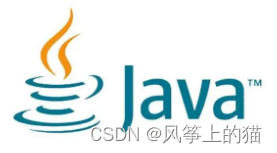
一、注解
Annotation(注解)是 Java 提供的一种对元程序中元素关联信息和元数据(metadata)的途径和方法。
Annatation(注解)是一个接口,程序可以通过反射来获取指定程序中元素的 Annotation对象,然后通过该Annotation 对象来获取注解中的元数据信息。
二、元注解
元注解的作用是负责对其他注解进行说明的注解。自定义注解时可以使用元注解。Java 5 定义了 4 个注解,分别是 @Documented、@Target、@Retention 和 @Inherited;Java 8 又增加了 @Repeatable 和 @Native 两个注解。可以在java.lang.annotation包中找到。
三、各个元注解的作用
1、@Target 指定一个注解的使用范围
即被 @Target 修饰的注解可以用在什么地方
@Target源码:
@Documented
@Retention(RetentionPolicy.RUNTIME)
@Target(ElementType.ANNOTATION_TYPE)
public @interface Target {ElementType[] value();}@Target 注解有一个成员变量(value)用来设置适用目标。以下为注解的枚举常量:
public enum ElementType {/** 类、接口(包括注解类型),或者枚举声明 */TYPE,/** 字段声明(包括枚举常量) */FIELD,/** 方法声明 */METHOD,/** 形参声明 */PARAMETER,/** 构造方法声明 */CONSTRUCTOR,/** 局部变量声明 */LOCAL_VARIABLE,/** 注解类型声明 */ANNOTATION_TYPE,/** 包声明 */PACKAGE,/** 类型参数声明 */TYPE_PARAMETER,/** 类型的使用 */TYPE_USE
}2、@Retention 描述注解保留的时间范围
即被描述的注解在它所修饰的类中可以被保留到何时
@Retention注解源码:
@Documented
@Retention(RetentionPolicy.RUNTIME)
@Target(ElementType.ANNOTATION_TYPE)
public @interface Retention {RetentionPolicy value();}他的value是 java.lang.annotation.RetentionPolicy 枚举类型。
public enum RetentionPolicy {//源文件保留SOURCE,//编译期保留,默认值CLASS,//运行期保留,可通过反射去获取注解信息RUNTIME} 生命周期大小排序为 SOURCE < CLASS < RUNTIME,前者能使用的地方后者一定也能使用。
如果需要在运行时去动态获取注解信息,那只能用 RUNTIME 注解,如 @Documented 注解;如果要在编译时进行一些预处理操作,比如生成一些辅助代码,就用 CLASS 注解,如 @NonNull 注解;如果只是做一些检查性的操作,则可选用 SOURCE 注解,如 @Override 和 @SuppressWarnings 注解。
3、@Documented 描述javadoc
描述在使用javadoc工具为类生成帮助文档时是否要保留其注解信息。
@Documented注解源码:
@Documented
@Retention(RetentionPolicy.RUNTIME)
@Target(ElementType.ANNOTATION_TYPE)
public @interface Documented {
}@Documented 是一个标记注解,没有成员变量。用 @Documented 注解修饰的注解类会被 JavaDoc 工具提取成文档。默认情况下,JavaDoc 是不包括注解的,但如果声明注解时指定了 @Documented,就会被 JavaDoc 之类的工具处理,所以注解类型信息就会被包括在生成的帮助文档中。
4、@Inherited 阐述了某个被标注的类型是被继承的
@Inherited 是一个标记注解,用来指定该注解可以被继承。如果某个类使用了被@Inherited修饰的注解,则其子类将自动具有该注解。
举个例子:
注解
@Inherited
@Target(ElementType.TYPE)
@Retention(RetentionPolicy.RUNTIME)
public @interface MyInheritedAnnotation {public String name() default "liuliu";}父类
@MyInheritedAnnotation(name = "parent")
public class Parent {
}子类
public class Child extends Parent {public static void main(String[] args) {Class<Child> child = Child.class;MyInheritedAnnotation annotation = child.getAnnotation(MyInheritedAnnotation.class);System.out.println(annotation.name());}}输出:
parent
5、@Repeatable注解
@Repeatable 是Java 8 新增,@Repeatable注解用于声明标记的注解为可重复类型注解,可以在同一个地方多次使用。Java 8 版本以前,同一个程序元素前最多只能有一个相同类型的注解,如果需要在同一个元素前使用多个相同类型的注解,则必须使用注解“容器”。
@Repeatable 注解源码:
@Documented
@Retention(RetentionPolicy.RUNTIME)
@Target(ElementType.ANNOTATION_TYPE)
public @interface Repeatable {Class<? extends Annotation> value();}举个例子
@Target(ElementType.TYPE)
@Retention(RetentionPolicy.RUNTIME)
public @interface MyRepeatableAnnotation {RepeatableAnnotationTest[] value();}@Target(ElementType.TYPE)
@Retention(RetentionPolicy.RUNTIME)
@Repeatable(MyRepeatableAnnotation.class)
public @interface RepeatableAnnotationTest {String key();String value();}@RepeatableAnnotationTest(key = "aa",value = "1a")
@RepeatableAnnotationTest(key = "bb",value = "2b")
public class RepeatableTest {public static void main(String[] args) {RepeatableAnnotationTest[] annotation = RepeatableTest.class.getAnnotation(MyRepeatableAnnotation.class).value();for (RepeatableAnnotationTest a : annotation) {System.out.println(a);}}}输出:
@annotation.RepeatableAnnotationTest(key=aa, value=1a)
@annotation.RepeatableAnnotationTest(key=bb, value=2b)
6.@Native注解
@Native注解修饰成员变量,则表示这个变量可以被本地代码引用,常常被代码生成工具使用。对于@Native注解不常使用,了解即可。

![[山东大学操作系统课程设计]实验2](http://pic.xiahunao.cn/[山东大学操作系统课程设计]实验2)



)

![[读论文][跑代码]BK-SDM: A Lightweight, Fast, and Cheap Version of Stable Diffusion](http://pic.xiahunao.cn/[读论文][跑代码]BK-SDM: A Lightweight, Fast, and Cheap Version of Stable Diffusion)



)


![[Ubuntu 18.04] RK3399搭建SSH服务实现远程访问](http://pic.xiahunao.cn/[Ubuntu 18.04] RK3399搭建SSH服务实现远程访问)




)